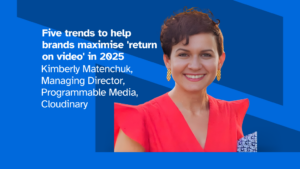Written by Joanna Reynolds, Managing Director of Bordeaux & Burgundy
The average attention span equates to just 8.25 seconds. Accelerated by the easy access to the constant stream of information available at our fingertips, marketer today are met with limited attempts to grab audience attention and make an impression
Here are some key strategies marketers can use to adapt to this challenging and overindulgent landscape.
Creating ‘snackable’ content
Create content that can be consumed quickly, such as 30-second videos or short blog posts, as one of the most effective ways to capture and hold attention is through visual and short-form content. As people devote less time to engaging with longer pieces of content, shorter forms are becoming increasingly popular. However, this can generate an abundance of shorterer-form pieces and make standing out more difficult.
More so, people process visual information faster and more efficiently than text, so marketers should prioritise eye-catching visuals in their content marketing. Think images, infographics, gifs, and videos. These are ideal for sharing on social media platforms, where people consistently scroll through feeds quickly to look for easily digestible content.
It’s important to create a more immersive and memorable experience for audiences.
Binge culture and experimenting with new channels
Marketers must be willing to experiment with new channels and approaches to reach and expand their audiences. This might include experimenting with emerging technologies or exploring new channels. The key is to stay agile and adaptable and be willing to try new things to stay ahead of the curve.
While consumers are known to scroll through various apps constantly, binge culture remains prominent. Reports declare that many use bingeing to detox from daily stresses, so immersive content can be received as a welcome break.
Mobile optimisation
Although this is by no means new information, mobile optimisation is essential today as people increasingly access content via their mobile phones or other smart devices. Data shows that, on average, users in the UK spend four hours and 14 minutes per day on their phones, an increase from 3.7 hours in 2020.
Therefore, content that is easy to read, navigate, and interact with must be designed to deliver the biggest impact on the smallest of screens. Websites and their loading times must also be fully optimised to avoid losing potential customers due to a poor user experience.
Personalised content
Personalisation is another crucial factor in capturing and retaining consumers’ attention. By tailoring content to the interests and preferences of your audience, you can create a more engaging and relevant experience. This can be achieved through a variety of techniques, such as segmenting audiences and creating content specific to each group’s needs and preferences. Engaging with your audience via targeted email campaigns, personalised landing pages, and recommendations.
This will not only seize their attention but also create a sense of connection between the user and the brand, increasing the likelihood of them engaging further.
Interactivity
Interactive content, such as quizzes, polls and surveys, is another effective way of keeping consumers engaged as they help break down longer pieces of content. Valuable insights into consumer behaviour and preferences can be achieved through this type of content, informing future marketing efforts.
Tracking data and insights
Tracking and analysing marketing efforts to determine what is and isn’t working is crucial to finding the best approaches. Data and insights can help enhance strategies, allowing marketers to adapt to and optimise current processes to ensure audience attention is retained within future campaigns.
The strengths of storytelling
Storytelling and use cases are other powerful tools for capturing and holding consumers’ attention. Creating a narrative that resonates with your audience can create a more emotional and resonating experience. People are more likely to remember impactful stories than they are facts, so using storytelling in your marketing efforts can be a powerful way to differentiate yourself from the competition and create a lasting impression.
Tailored titles
Attention-grabbing headlines and titles are crucial in getting people to click on and engage with your content. A study showed that almost 40 per cent of consumers would watch a video with a click-bait title all the way to the end. Like in national news, the more dramatic the title, the higher the engagement levels.
It’s important to create clear, concise and relevant headlines for your audience. Headlines that are too vague or generic are unlikely to grab anyone’s attention, so it’s important to put some thought and effort into crafting effective headlines that will be of value to and resonate with your audience.
The ultimate advice is to stay agile, adaptable and focused on the needs and evolving preferences of the audience. To remain effective in the face of ever-shrinking attention spans, marketers must stay on top of trends across all channels, and be unafraid to experiment, as they could become the next big thing.









